A Question of livelihood
Livelihood is the way you make your living and pay for the basic things you need in life, this refers to their “means of securing the basic necessities -food, water, shelter, and clothing- of life”.
Nowadays, many people decide to migrate to have a better life. Employment opportunities are the most common reason due to which people migrate. Except this, lack of opportunities, better education, construction of dams, globalization, natural disaster (flood and drought) and sometimes crop failure forced villagers to migrate to cities.
CONTEXT
The story revolves around my grandfather who migrated to Bangalore during 1950. He is a Marwari who practiced farming in Bur, Rajasthan after migration got a job in Bangalore as a halwai and later starts his own family business known as Mithu Kulfi.
“Livelihood is a method for making a living in the world”...and at one point Jugraj sees that there is no turning back, the idea to migrate, leaving behind everything and moving into a new world is terrifying.
Where would he go? What would he do? The role played by migration, opens up these emotional questions which deep inside triggers a man’s thoughts about survival and at no cost can he turn back, it could either have a positive or a negative impact on an individual.
Migration is the key that connects livelihood as it can alter a mans perspective of things and can transform his perception on practicing a chore, as every region in the world, has its taste in culture, food, clothing and the way they carry their lives forward.
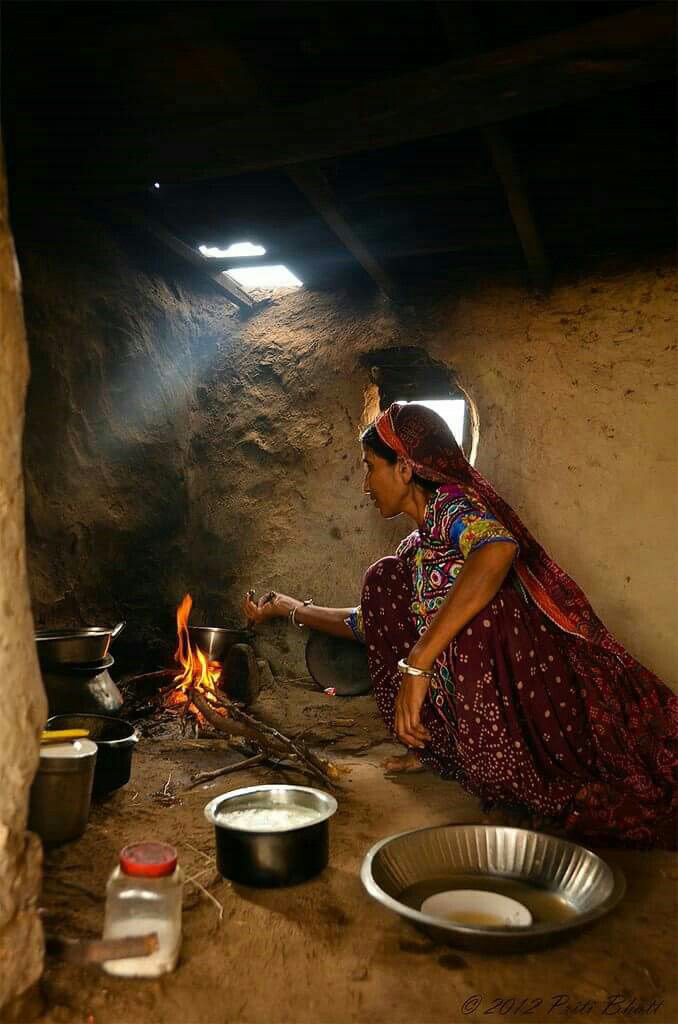
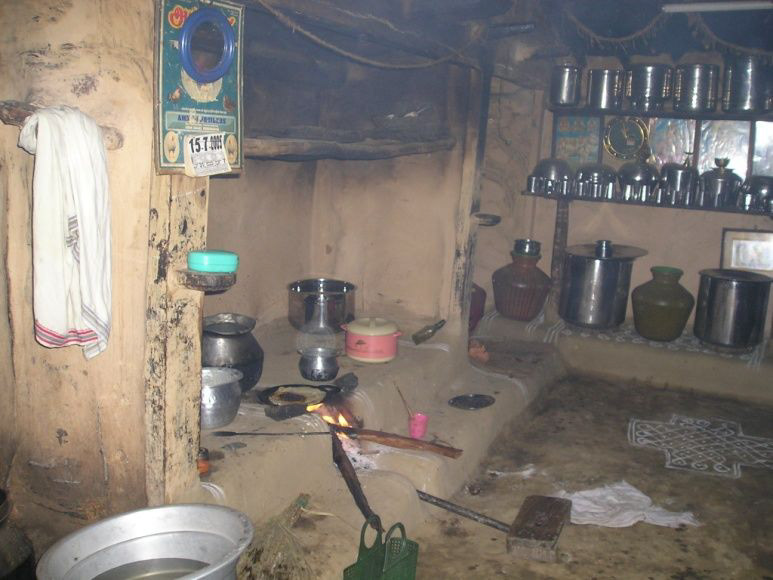
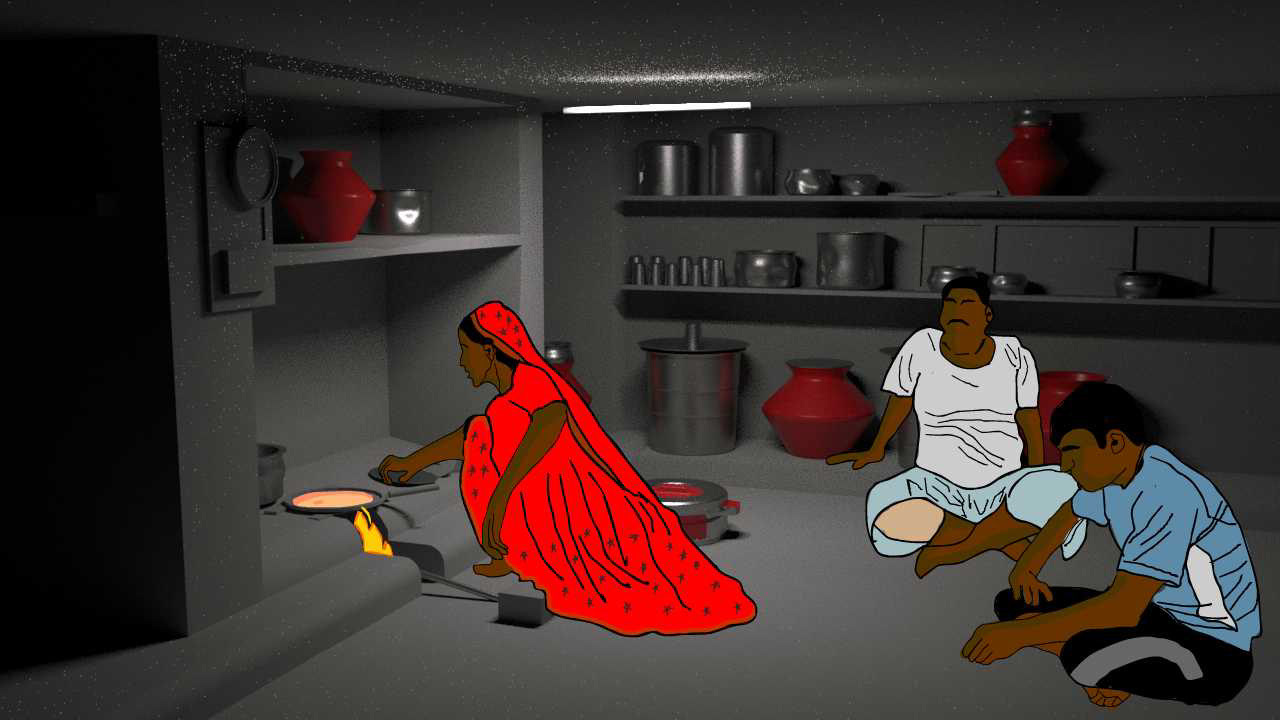
3D Composition with 2D animation
Taking references from the 1950’s I modeled and composed a kitchen space and used 2D animation to draw the characters and animate on the 3D space to show small movements of those characters.
My film will be made using this technique as I could model assets of that period and add animated characters to move in the environment. The use of different mediums is crucial to the storyline as the story is set in the past and modeling them could give a realistic look while the animation could help me show movements and unfold the story scene by scene.
Animatic
PERIOD RESEARCH SCENE BY SCENE
Scene 1: Drought land [1950’s]
3D Setup: We see dry & cracked land. The scene would be angled from the ground to the sky.
2D Animation: Jugraj will be looking up at the sky with a sickle in his hand and another hand kept on his forehead.
Character: Jugraj is a 28yr old young farmer whose farmland has been affected due to drought and is worried about how he is going to cultivate and earn for a living.
Period Research: In the 1950’s all the farming activities were done through hand tools like Sickle hand Shovel, hand pruners, etc. since no machinery was available. Tractors first came in by 1959. Surface, Sprinkler, Drip irrigation were not available at that time, farmers would wait for the rain to water their fields.
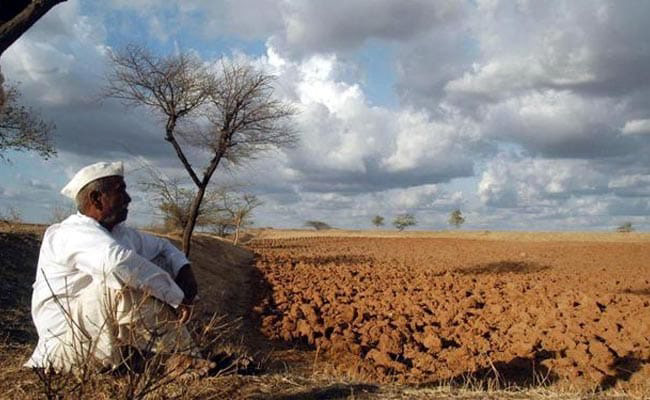
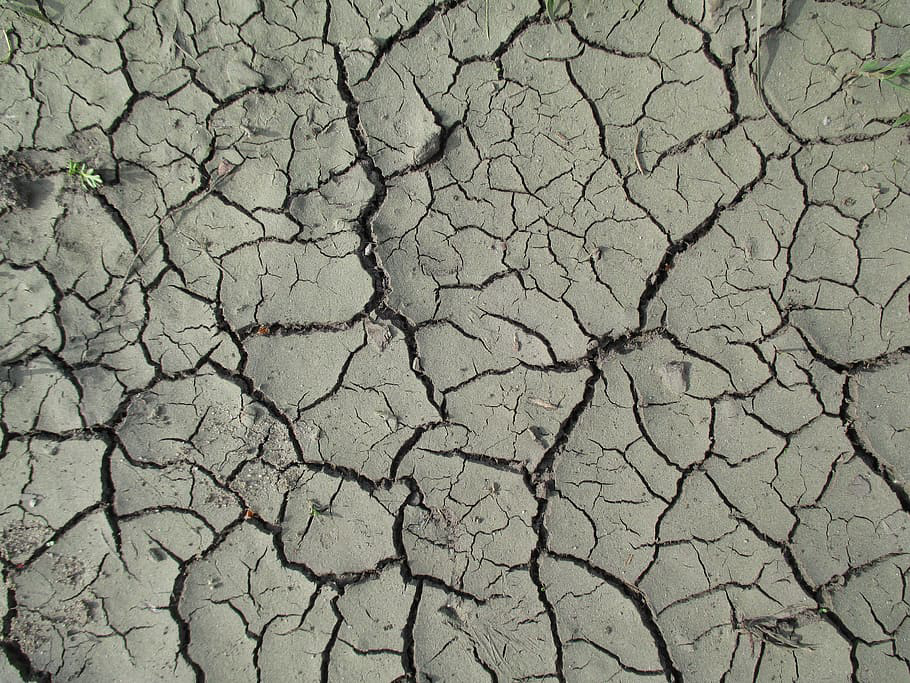
(Seen in the picture is a farmer sitting near his farmland looking at the sky. The area around him is completely dry, even the trees have shed leaves. In the second picture we can see how the ground has dried and cracked making it unable to cultivate.)
Sound: Piano and Strings instrumental sound will be heard with a poem being narrated and sound of a Crow from a distance will be heard.
Lyrics:
Aaya nahi abki baar Thodi dhoop mein thodi chaon mein ,
Fasal panapti thi zameen par mere gaon mein ,
Ek baar phir Saavan ka mahina lautkar aaya tha ,
lekin Saath mein, apne bebasi voh laaya tha,
Mehnat ka phal ho gaya tha bekaar ,
Sookhe zameen par mere fasal aayi nahi abki baar.....
Fasal panapti thi zameen par mere gaon mein ,
Ek baar phir Saavan ka mahina lautkar aaya tha ,
lekin Saath mein, apne bebasi voh laaya tha,
Mehnat ka phal ho gaya tha bekaar ,
Sookhe zameen par mere fasal aayi nahi abki baar.....
Drawing Composition
Scene 2: Sitting together for a meal but Jugraj is worried.
3D Setup: We see a kitchen setup.
2D Animation: Jugraj’s wife is seen preparing Rotis and Jugraj is laid back sitting on the floor rubbing his face worried and his son is eating food. After a while, the room becomes smoky as the wife blows into the burner to increase the fire.
Characters: Jugraj unable to feed his family sits down worried as to when the groceries would last and thinks out ways to earn. His wife Rasheela prepares food for Manish and Manish who is Jugraj’s son continues to eat his food.
Period Research: In the 1950’s wood was used as a fossil fuel since gas stoves were not available and the houses back then didn’t have proper chimneys so all the smoke would come in. The house wasn’t big and had a common hall, kitchen space and would they sleep laying down on a rug made of plastic.
2D Animation: Jugraj’s wife is seen preparing Rotis and Jugraj is laid back sitting on the floor rubbing his face worried and his son is eating food. After a while, the room becomes smoky as the wife blows into the burner to increase the fire.
Characters: Jugraj unable to feed his family sits down worried as to when the groceries would last and thinks out ways to earn. His wife Rasheela prepares food for Manish and Manish who is Jugraj’s son continues to eat his food.
Period Research: In the 1950’s wood was used as a fossil fuel since gas stoves were not available and the houses back then didn’t have proper chimneys so all the smoke would come in. The house wasn’t big and had a common hall, kitchen space and would they sleep laying down on a rug made of plastic.
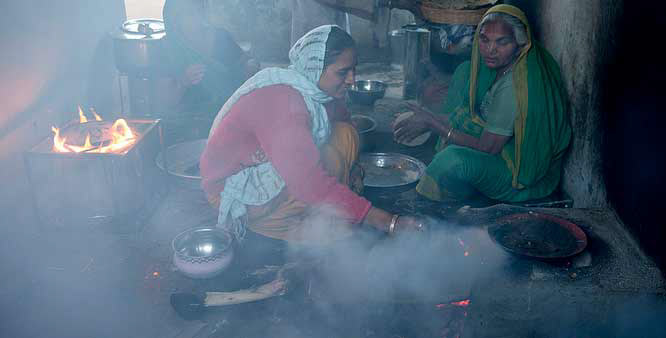
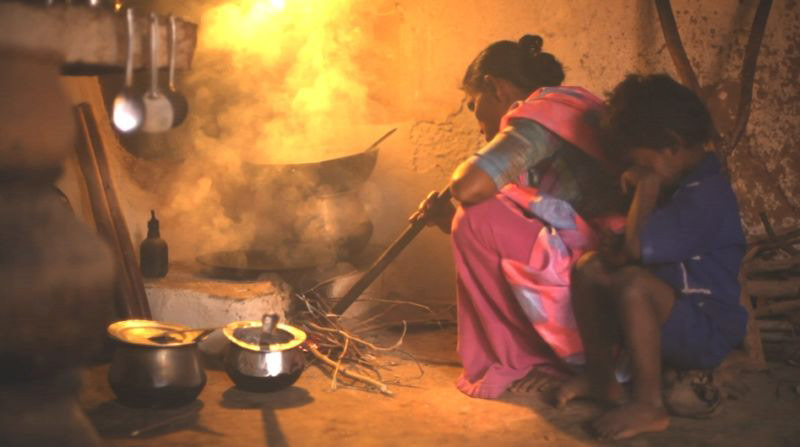
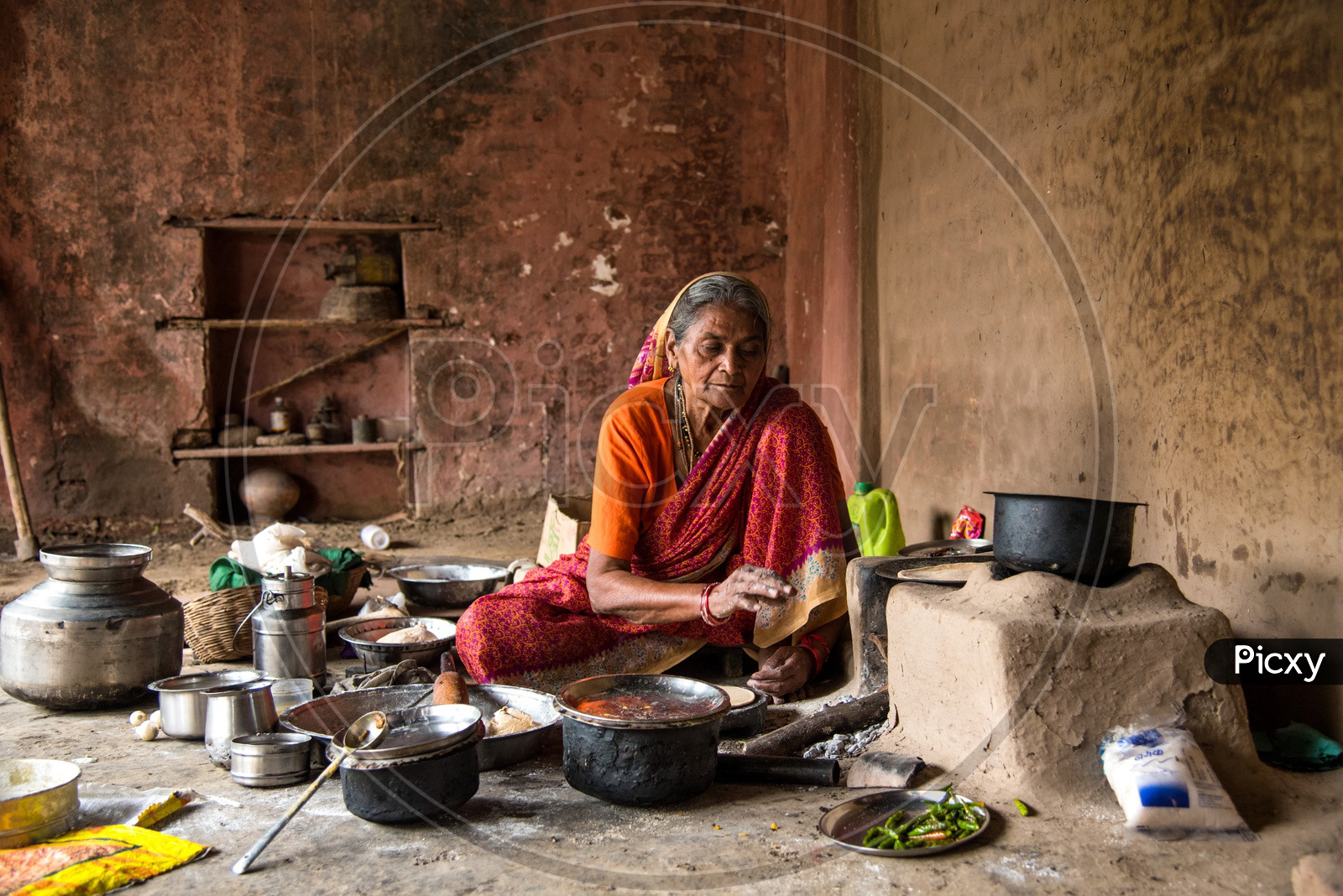
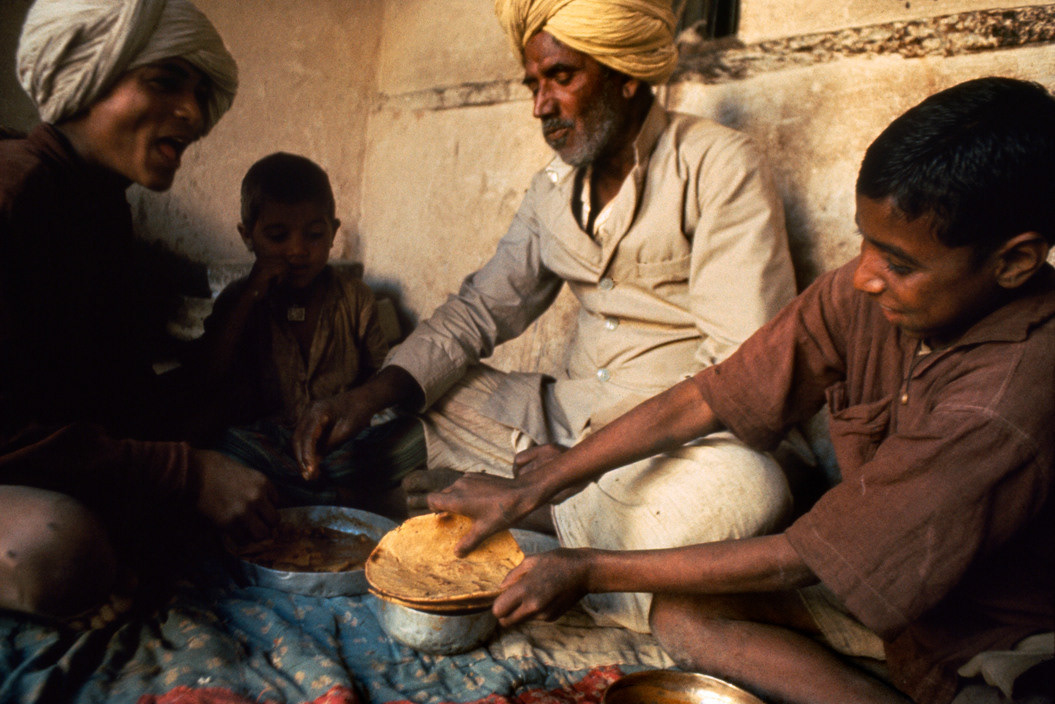
(In the reference pictures we see how the food is prepared at homes and how fire is ignited with blowpipes and blown continuously, the utensils are all made out of clay, metal or plastic they have shelves built to the wall. Everyone stays together and eats together.)
Sound: Piano and Strings instrumental sound will be heard with a poem being narrated.
Lyrics:
Makaan Aankhon mein nami hai ,
Anaaj ki is aangan mein kami hai ,
kamzor deewaron ko bikharta dekh ghabraati hai yahan har ek jaan
kuch aisa hai mera makaan.
Anaaj ki is aangan mein kami hai ,
kamzor deewaron ko bikharta dekh ghabraati hai yahan har ek jaan
kuch aisa hai mera makaan.
Scene 3:Departure with a heavy heart
3D Setup: We see the exterior of Jugraj’s house. The shot will be placed at the eye level.
2D Animation: Jugraj leaves his house. His wife is standing at the edge of the house entrance for sending Jugraj away.
Characters: Jugraj is the only person who earns in his family. He is scared and lost doesn’t know how his family is going to live without him. Rasheela is Jugrajs wife, she is 25yrs old and has two kids. She would practice pot making and would sell them for an extra income, she has never been away from Jugraj and without him now has to take care of the whole house.
Period Research: Jugraj had a small house. The kitchen and the living space were common. The wife would cover her face with her saree as a sign of respect. The house compound wall had cow dung cakes stuck to them which would be used as fossil fuel and also keep away the insects. The house had a cement platform to dry the spices and pots kept around which were kept to be sold. It was a simple house with a wooden door entrance, small floral designs near the window not very decorative as compared to many Marwari houses and people would sleep outside on cots during the summer as it would be really hot. The men would wear dhoti, a cotton shirt, and a pagri on their head while the women would wear ghagras and cholis and would cover their faces with odhni.
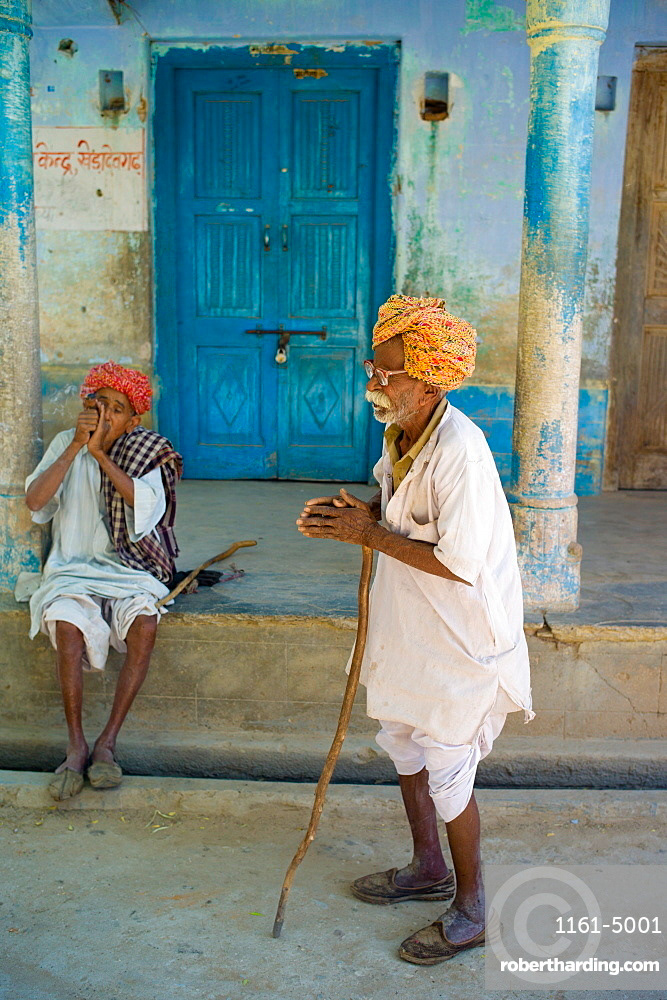
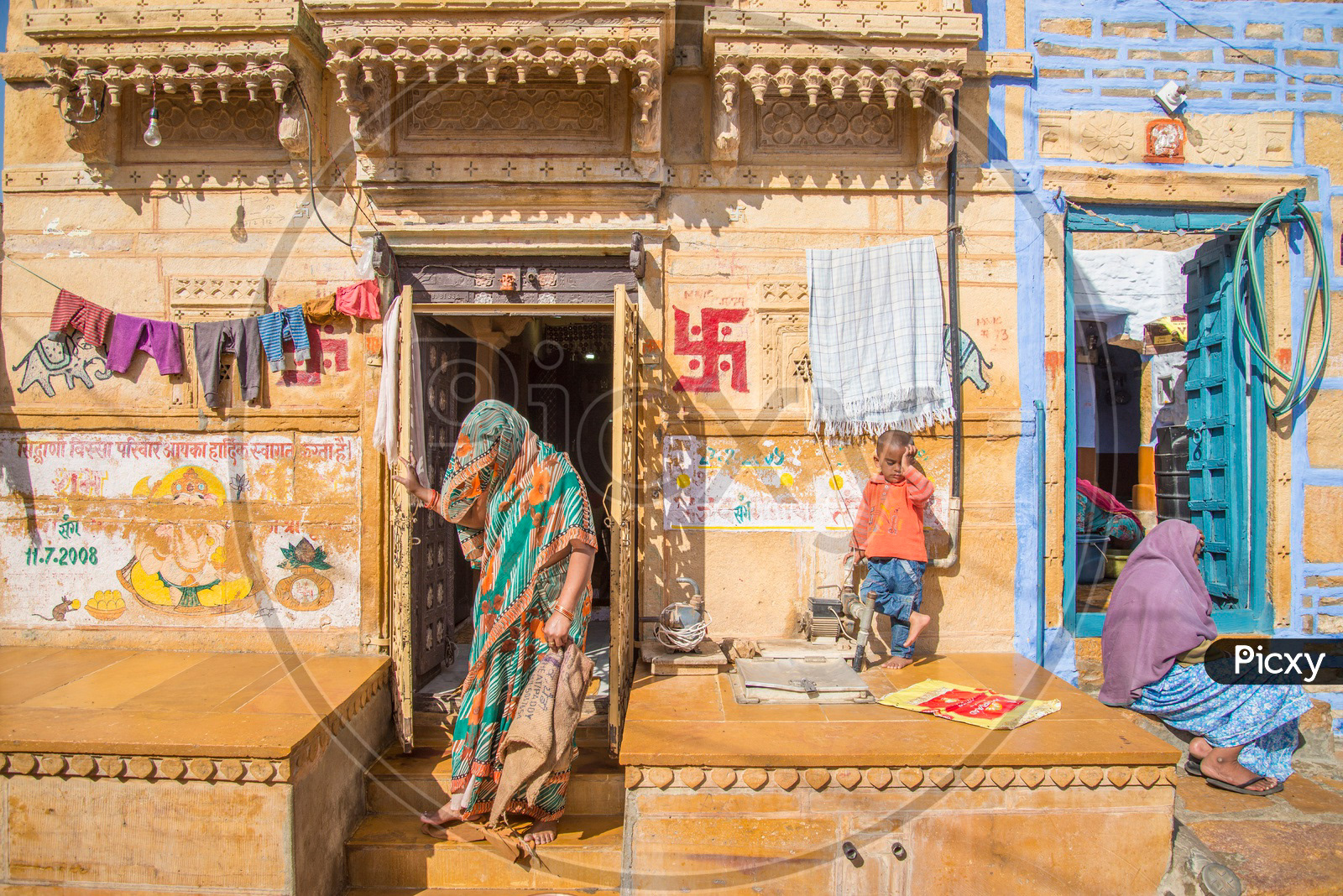
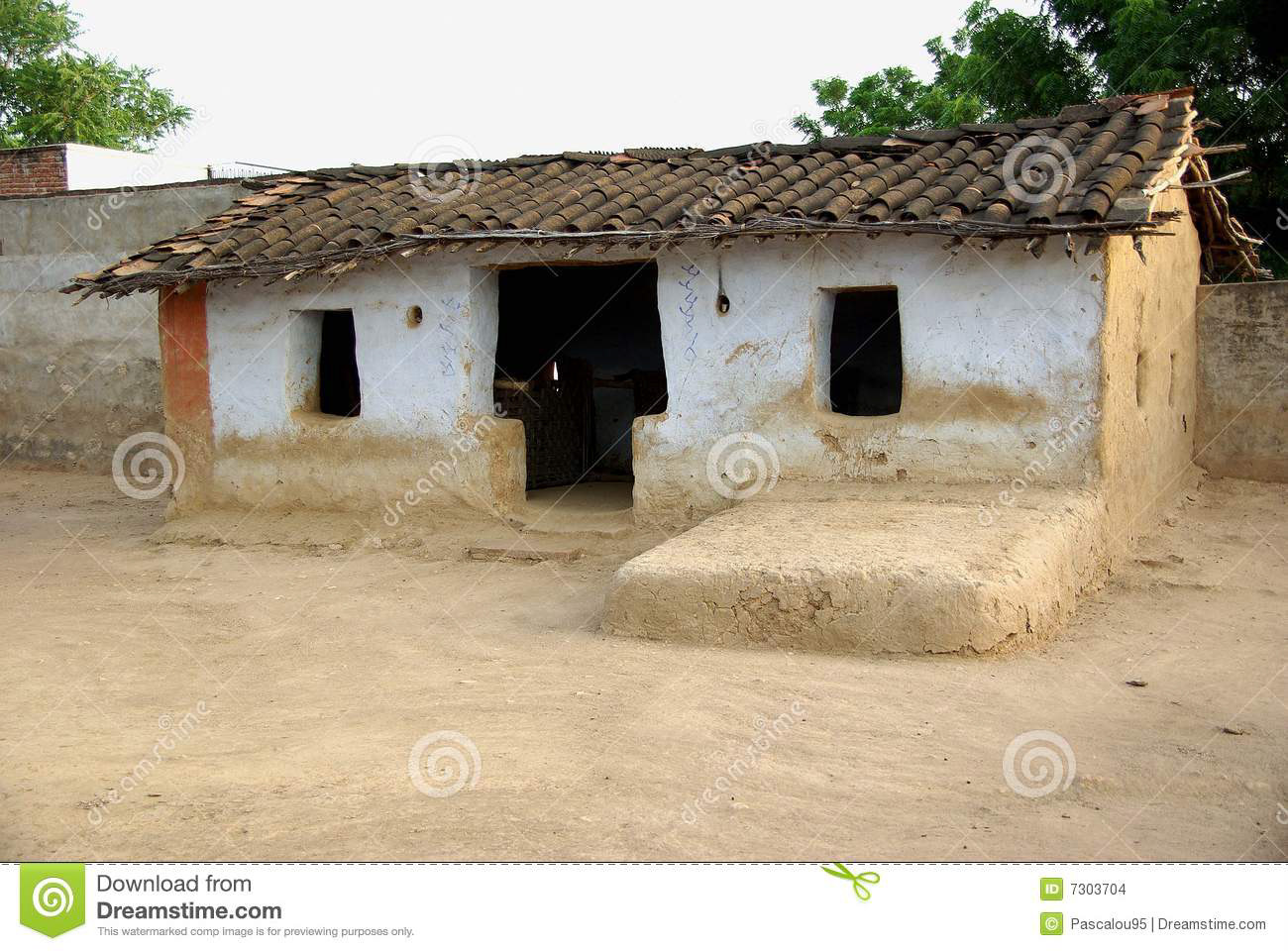
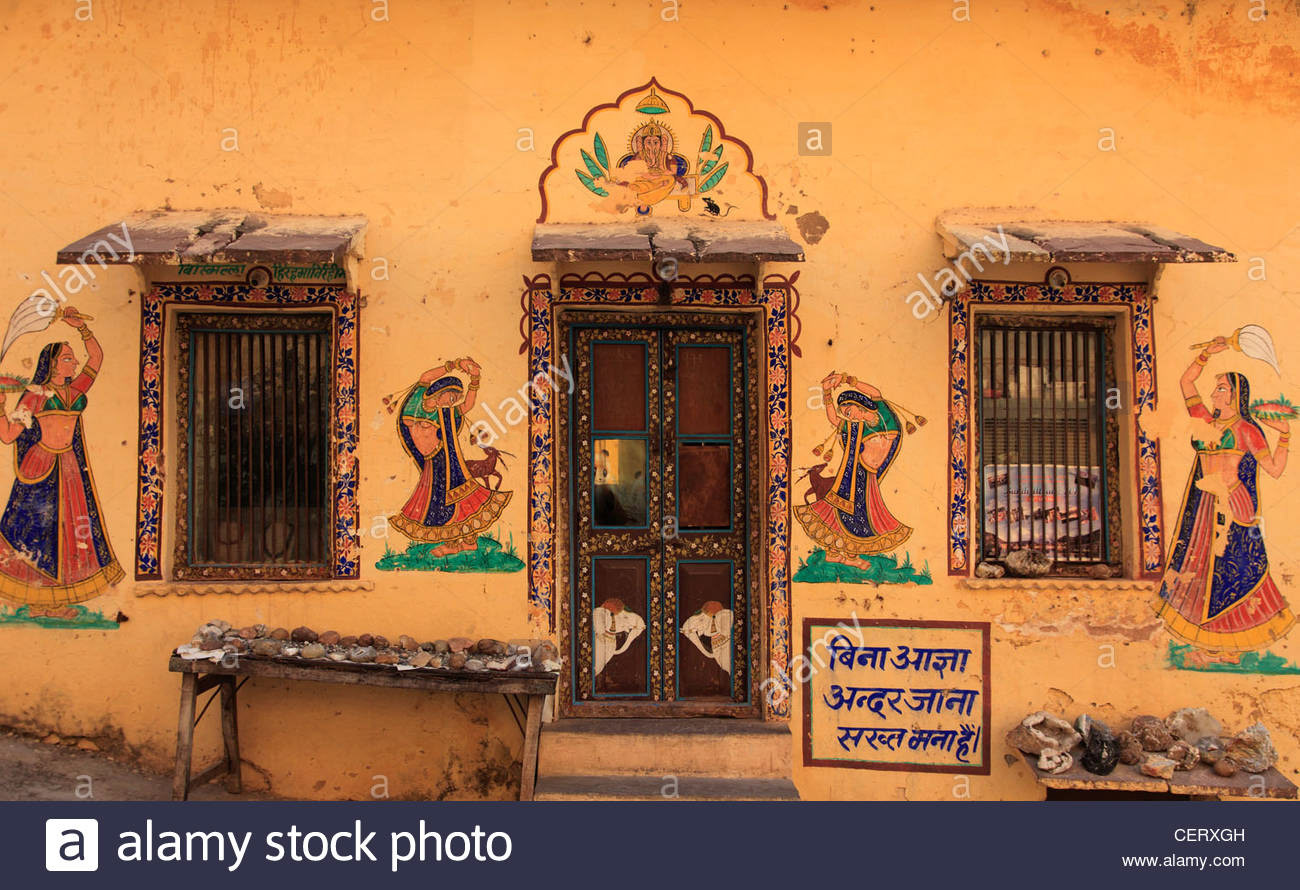
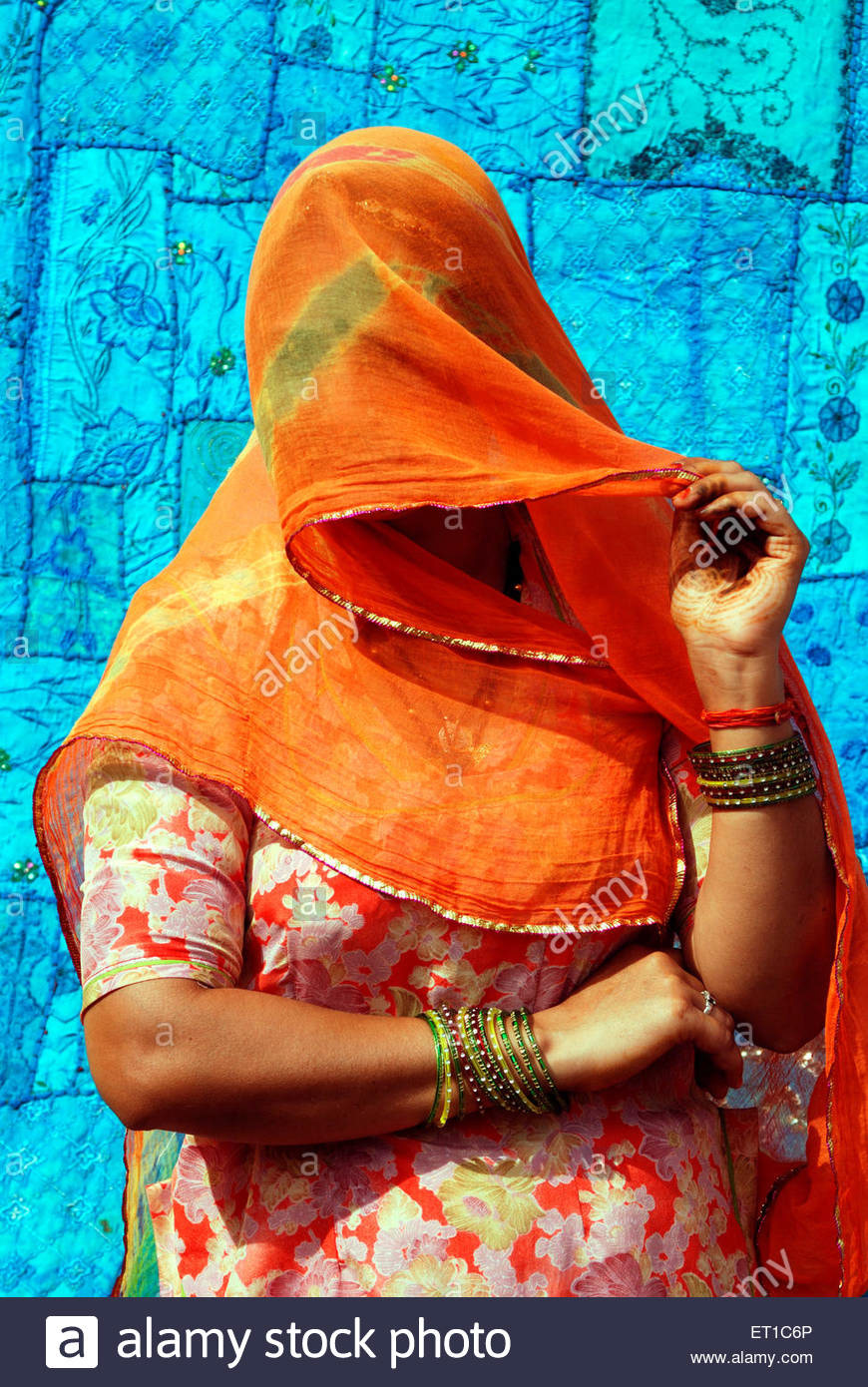
(The picture shows how the houses in Rajasthan would be. The houses would be both simple and decorative, the men would always have a turban on their head and the women in front of an elderly person would always cover their face with their saree.)
Sound: Piano and Strings instrumental sound will be heard with a poem being narrated, Jugraj’s foot steps will be heard and Jugraj’s wife will be crying and sobbing trying to stop jugaj from leaving his house.
Scene 4: The Train Journey.
3D Setup: The train will be modeled along with the electric pole.
2D Animation: Jugraj is sitting near the train door, he looks outside and looks back in. The sky colour changes from sunrise to sunset.
Character: Jugraj has left his homeland with some money (chiller) , a few clothes, and a hope to find a living in an unknown place. He looks outside and looks back in feeling uncomfortable. He keeps his body stiff and doesn’t talk to the fellow passengers next to him and keeps everything to himself as he is not sure of what is going to happen next.
Period Research: It takes about 2 days traveling from north to south, there were very few luxurious trains during this period which the Indians couldn’t afford. The trains that would run in India had seating on opposite sides and not all seats had windows to them. The door was very narrow and people would also sit on the floor to travel. The railway wasn’t fully established in India so the frequency was less. Jugraj traveled in an unreserved chair car train.
(People stuffing themselves as the train frequency was less as well as the coaches for the poor, middle- class people were limited.)
Sound: Piano and Strings instrumental sound will be heard with a poem being narrated, The train honk will be heard.
Lyrics:
Aankhon mein apne hazaaron sapne bunte huye,
Zubaan par apne ehsaason ke lafz liye nikalte huye,
Aasha yahii karta hoon ki Mehnat ke phal se
Khushiyan mere parivar ko aa ghere.
Zubaan par apne ehsaason ke lafz liye nikalte huye,
Aasha yahii karta hoon ki Mehnat ke phal se
Khushiyan mere parivar ko aa ghere.
Scene 5: Arriving at Cantonment Railway Station, Bangalore [1950’s]
3D Setup: We will see the Bangalore Cantonment office, the train and the platform.
2D Animation: Jugraj looks around the place and is scared not able to decide where to go. A woman who is selling wooden crafted toys on the platform looks at Jugraj but continues to sell her products.
Characters: Jugraj is familiar with Hindi and Marwari and doesn’t understand any other language. In Bangalore, most of the people communicate in Kannada which makes Jugraj uncomfortable and harder to talk to people. Standing on foreign land where he doesn’t know anything makes him doubt his own decision.
Period Research: During the 1650s there were no signboards for directions or boards that wouldn’t provide much information. People wouldn’t know languages more than their mother tongue. The food stalls didn’t exist, there weren’t proper sitting spaces or inquiry boots. The platforms were also less.
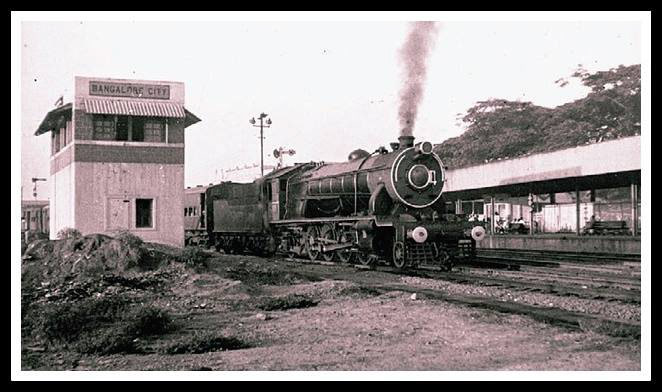
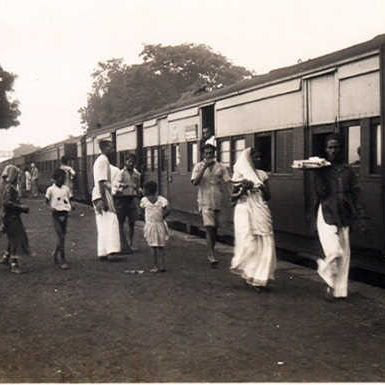
Sound: Piano and Strings instrumental sound will be heard with a poem being narrated, footsteps of peple, ambient sound and toy seller selling her toys.
Lyrics:
“ Namaskara heyg idira ? “- poonchte hai log mujhse baar baar,
pette naam ki sadak ka sab karte hai yahan jai jaikaar....
Mujh berozgaar ko vahaan kaam miljaaye toh maanunga na kabhi haar,
Dhugni mehnat lage toh bhi karunga sab iss baar ....
pette naam ki sadak ka sab karte hai yahan jai jaikaar....
Mujh berozgaar ko vahaan kaam miljaaye toh maanunga na kabhi haar,
Dhugni mehnat lage toh bhi karunga sab iss baar ....
Scene 6: Finding work at Chikpete, Bangalore.
3D Setup: The shops of Chickpete will be modeled.
2D Animation: Jugraj is seen looking around sitting near a shop with hands folded. He looks down and hears a person say “Banarasi Sweet House par kaam mil Raha hai” and suddenly looks up on top. (Split-screen)
Character: Jugraj reaches Banaras sweet shop; he’s confused as to what is happening around him, the loud noise of Kannada language echoing in his ear. He loses hope as he is not able to find work and sits down disappointed in himself. When he hears a man speak of work, his lost hope is slightly restored.
Period Research: The sweet shop was established in the 1950s and has been in the same location until today. Chickpete known before as Bangalore Pettha was not crowded like today and had only a few shops around it was more of a residential area.
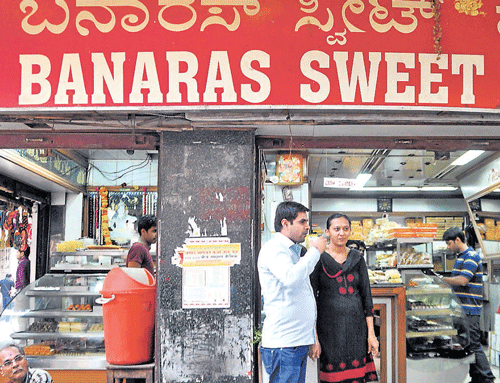
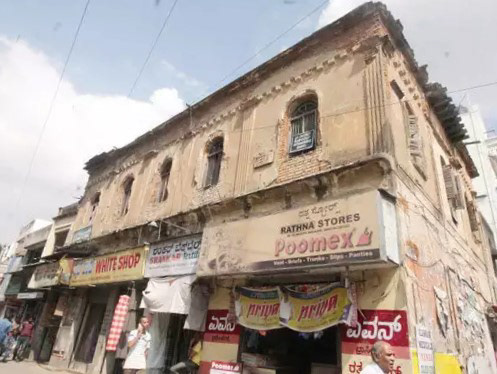
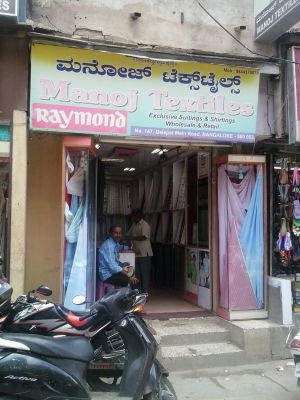
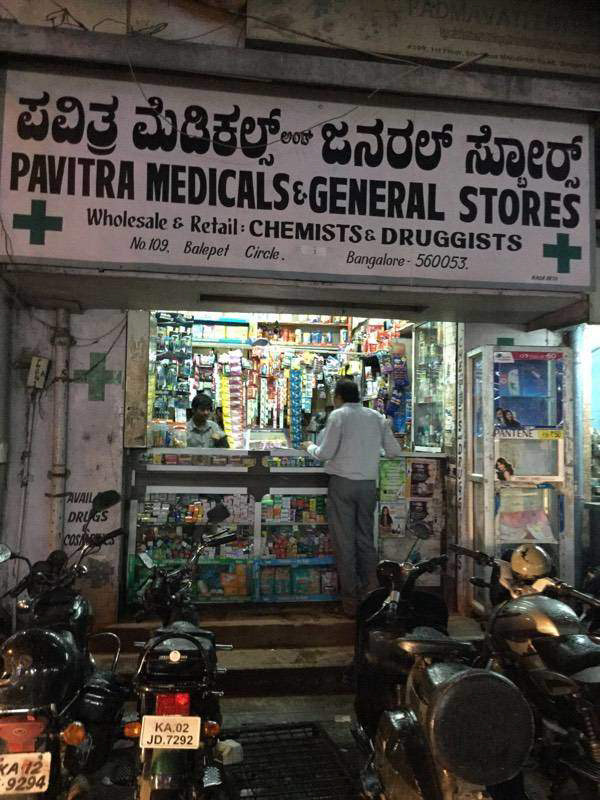
Sound: Piano and Cello instrumental sound will be heard with a poem being narrated, Ambient sound, Jugraj here’s someone for job vacancy.
Lyrics:
Thakaa haaraa idhar udhar main bhatakta raha ,
pette naam ki sadak par kaam ki talaash karta raha ....
Dum todkar main yunhi ik dukaan ke saamne baith jab gaya ,
Ik anjaan ne aawaaz lagayi aur kaam mil gaya ....
Sirhaane baithe ‘ Banaras sweets ‘ ke zindagi mein mere mithaas lautkar aayi ,
Berozgaar jugraj ab banega ek khush haal halwaai ....
pette naam ki sadak par kaam ki talaash karta raha ....
Dum todkar main yunhi ik dukaan ke saamne baith jab gaya ,
Ik anjaan ne aawaaz lagayi aur kaam mil gaya ....
Sirhaane baithe ‘ Banaras sweets ‘ ke zindagi mein mere mithaas lautkar aayi ,
Berozgaar jugraj ab banega ek khush haal halwaai ....
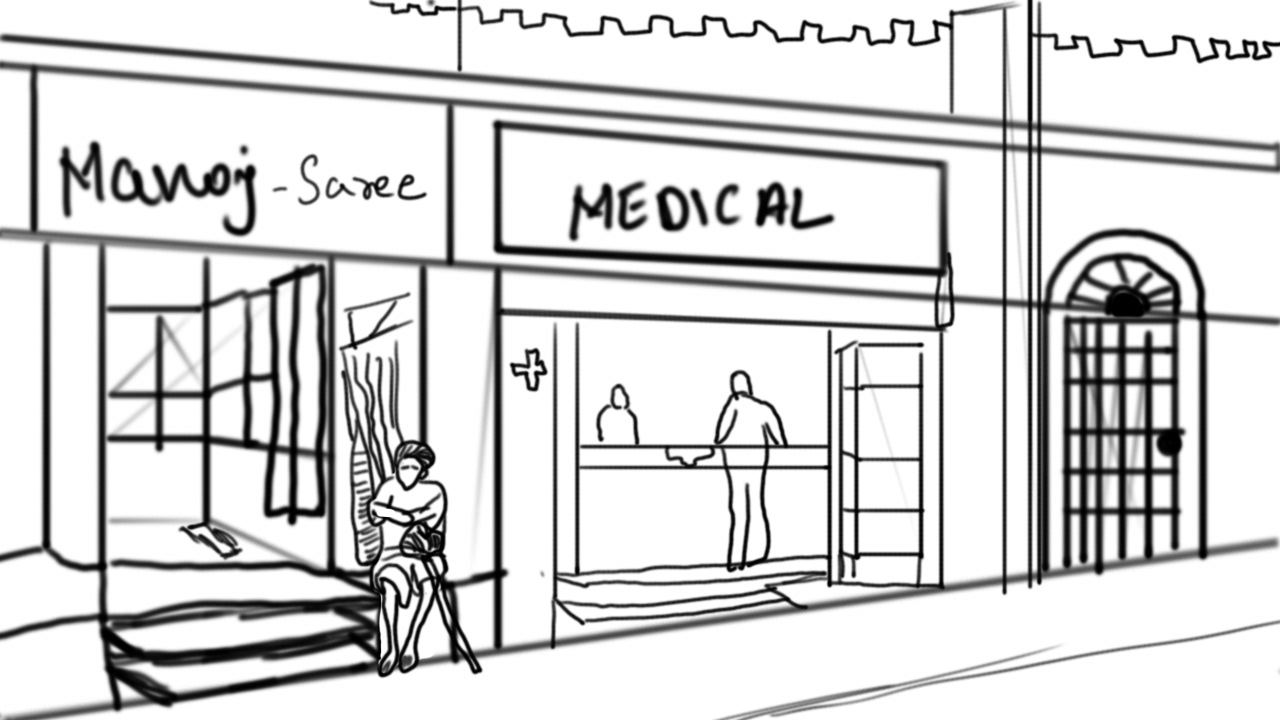
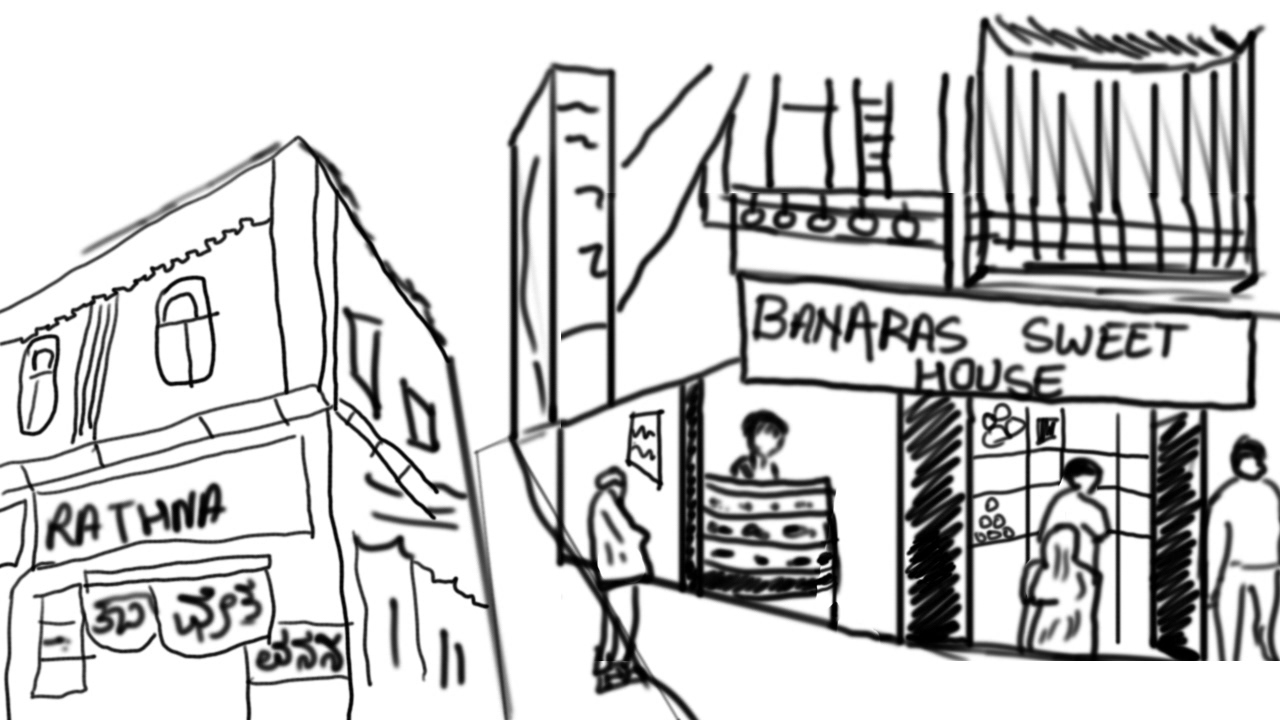
Scene 7: Making Rabri at Banaras Sweet House [Mid 1950’s]
3D Setup: A room will be modeled with all the kitchen utensils like the gas stove, cylinder, compartments, etc;
2D Animation: Jugraj is stirring the hot milk
Character: After a long-suffering Jugraj can earn and is now preparing rabri from his ingredients and serves the dessert to everyone. This has made him confident and independent.
Period Research: By this period, gas stoves were made available to use and the consumption of wood was reduced in the process of making food. There were already copper, earthenware, steel, and aluminum utensils available and gas stove helped in preparing the desserts faster. Standing around the gas for too long made people sweat and would make their clothes greasy and dirty so they would remove their shirt off.
Sound: Piano and Cello instrumental sound will be heard with a poem being narrated, stirring of milk.
Lyrics:
Kaam mila hai yahaan mujhe ,Pehchaan mili hai aaj mujhe ....
Gumnaam tha jo kal tak yahaan ,Ik naam mila hai aaj mujhe ....
Kush haal zaroor hoon yahaan ,par kushal banana abhi baaki hai ....
Gumnaam ho Kaam karta hoon yahaan ,Apna naam banana abhi baaki hai ....
Gumnaam tha jo kal tak yahaan ,Ik naam mila hai aaj mujhe ....
Kush haal zaroor hoon yahaan ,par kushal banana abhi baaki hai ....
Gumnaam ho Kaam karta hoon yahaan ,Apna naam banana abhi baaki hai ....
Scene 8: Idea of making kulfis [End 1950’s]
3D Setup: The utensils spread around the place and kitchen equipment are placed around the room space.
2D Animation: Jugraj stores rabri in the freezer and comes back the next day to take it out. Accidentally, he loses his balance and one bowl falls off the tray he was holding.
Character: Jugraj had prepared an excess of rabri which went unsold, he thought to use it the next day. To avoid spoiling, he keeps it in the freezer and leaves. The next day when he removes the rabri and a small chunk fell down. He tries the frozen rabri and gets an idea of starting his own business.
Period Research: Freezers were available in Bangalore, India during 1958.
Sound: Piano and Cello instrumental sound will be heard with a poem being narrated, opening the refrigerator. Lyrics:
Har din ki tarah aaj bhi khaya tha maine ise ,
Mulaayam na hokar mazboot tha aaj patthar ki tarah yeh ,
Koshish kar haath mein liye chakha jab maine ,
Thandi kulfi ka aagaz hua dil mein ....
Ab jaan gaya tha ki pehchaan meri ek baar phir badlegi ,
shayad MITTHU KULFI WALA naam ki meri kulfi gaadi chalegi ....
Mulaayam na hokar mazboot tha aaj patthar ki tarah yeh ,
Koshish kar haath mein liye chakha jab maine ,
Thandi kulfi ka aagaz hua dil mein ....
Ab jaan gaya tha ki pehchaan meri ek baar phir badlegi ,
shayad MITTHU KULFI WALA naam ki meri kulfi gaadi chalegi ....
Scene 9: Mithu Kulfi Walla Cart[1960] & Owning his own Kulfi Truck [1965]
3D setup: Modeling of a residential area. [Environment in 3D]
2D Animation: Jugraj is seen pushing the cart and distributing kulfis to children. After a while, the cart transforms into a kulfi truck.
Character: Jugraj feels really amused with the crowd coming to buy his kulfis that he had never thought of coming into this business. From a farmer to an established businessman!
Sound: Piano and Cello instrumental sound will be heard with a poem being narrated, children calling him names to stop him, footsteps, truck engine noise.
Lyrics:
Dheere dheere tarakki dugni huyi jab ,
thela mere kulfi ka ek truck bana tab....
Badlaav yeh dekhkar aksar ankhen ho jaati meri nam,
Sapne honge ab poore , zindagi mein naa rahega koi gham !!
thela mere kulfi ka ek truck bana tab....
Badlaav yeh dekhkar aksar ankhen ho jaati meri nam,
Sapne honge ab poore , zindagi mein naa rahega koi gham !!

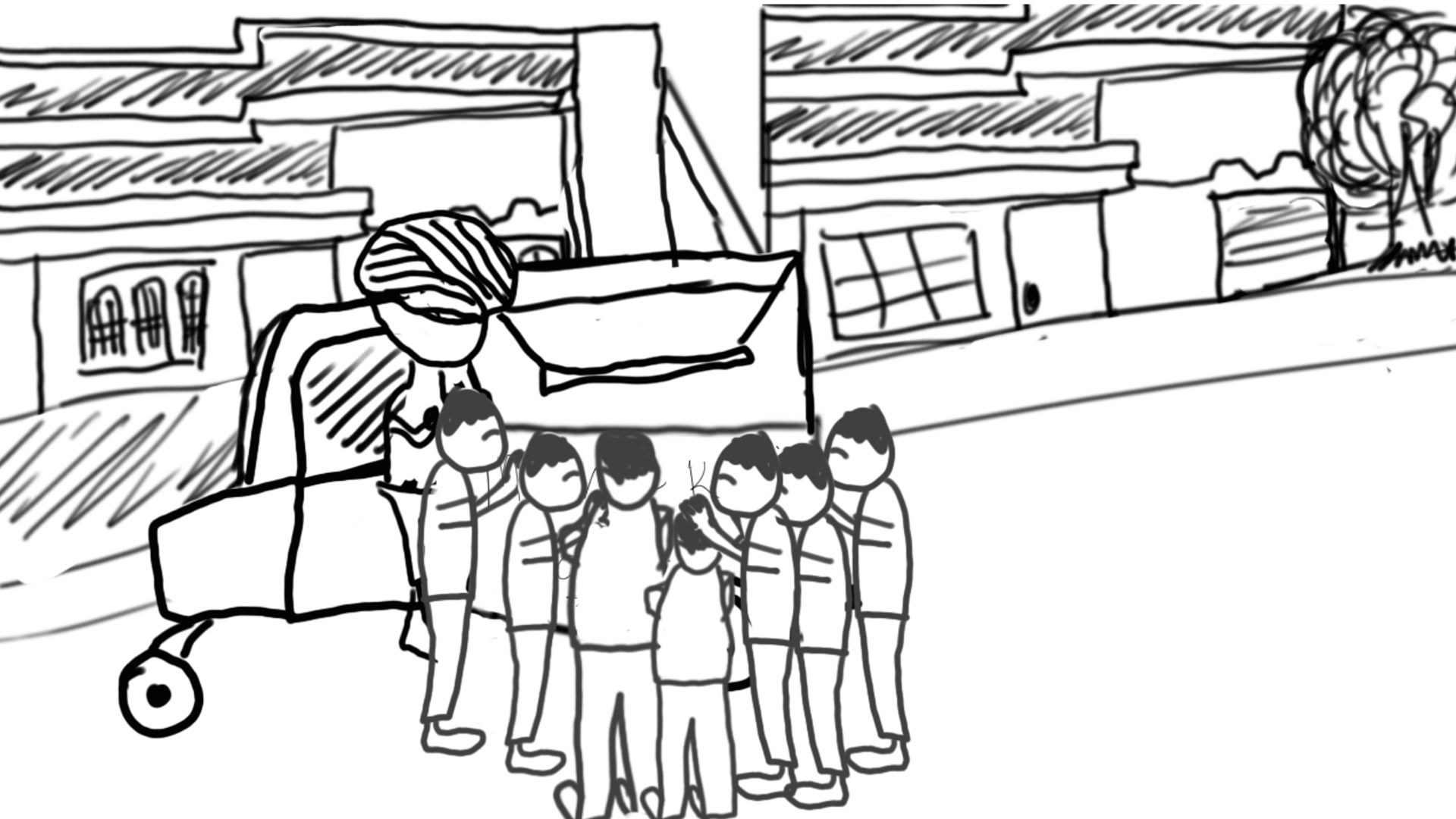
Look and Feel Frames



